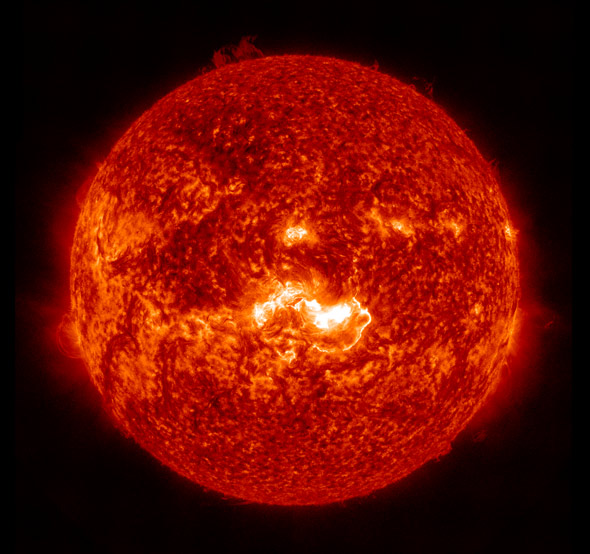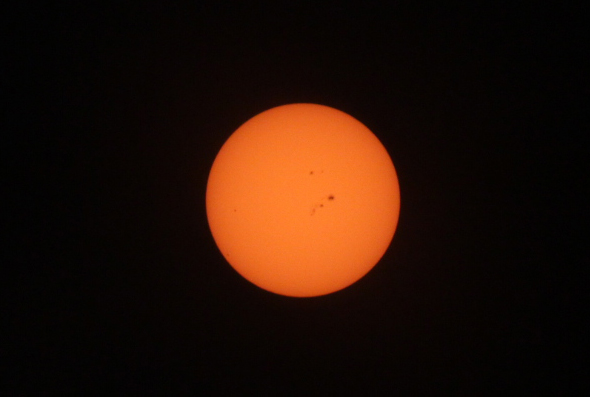
Photo by NASA/ESA/SDO/Helioviewer.org
Right now, the Sun is sporting a huge sunspot called AR1944. Itís grown in size over the past few days to a staggering 200,000 kilometers (125,000 miles) across. As I wrote the other day, sunspots are regions of intense magnetism, and these magnetic fields store huge energies. They can be unleashed in vast explosions called solar flares Ö and AR1944 popped off a good one on Jan. 7. The image above shows the Sun in ultraviolet by NASAís Solar Dynamics Observatory, taken on Jan. 7 at 18:33 UTC, just after the flare exploded. The bright white patch? Yeah, thatís it.
The flare was a class X1, which is pretty strong. It also triggered a coronal mass ejection, an eruption of subatomic particles, toward the Earth. Thereís no need to panic; these happen relatively often. This one was pretty fast, with a speed of about 2,000 kilometers per secondóthatís 4.5 million miles per hour!

Photo by Phil Plait
Itís expected to hit the Earthís magnetic field sometime today or tonight. The Space Weather Prediction Center says it may interact strongly with our geomagnetic field, producing aurorae. Iíve seen some folks predicting even mid-latitudes may see the lights, so I urge folks to go out after dark and look north. Unfortunately the Moon is half-full and so the sky will be a bit bright. It sets just after midnight local time, so if you go out later your chances of seeing the aurora might be better. It looks like weíll have clear skies here in Boulder, Colo., so Iíll be taking a peek. Aurorae may still be visible Thursday night as well.
Iíll note that this storm provoked the delay of an Orbital Sciences Corporation launch of their Antares rocket, scheduled to lift off today on a resupply mission to the International Space Station. The increased radiation levels could screw up the systems onboard, so they decided to postpone. Follow Orbital on Twitter for up-to-date info on that.
Once this thing hits us Iíll try to follow up, but your best bet is to check SpaceWeather.com and follow me on Twitter for the latest news; Iíll try to post updates there as I see them.